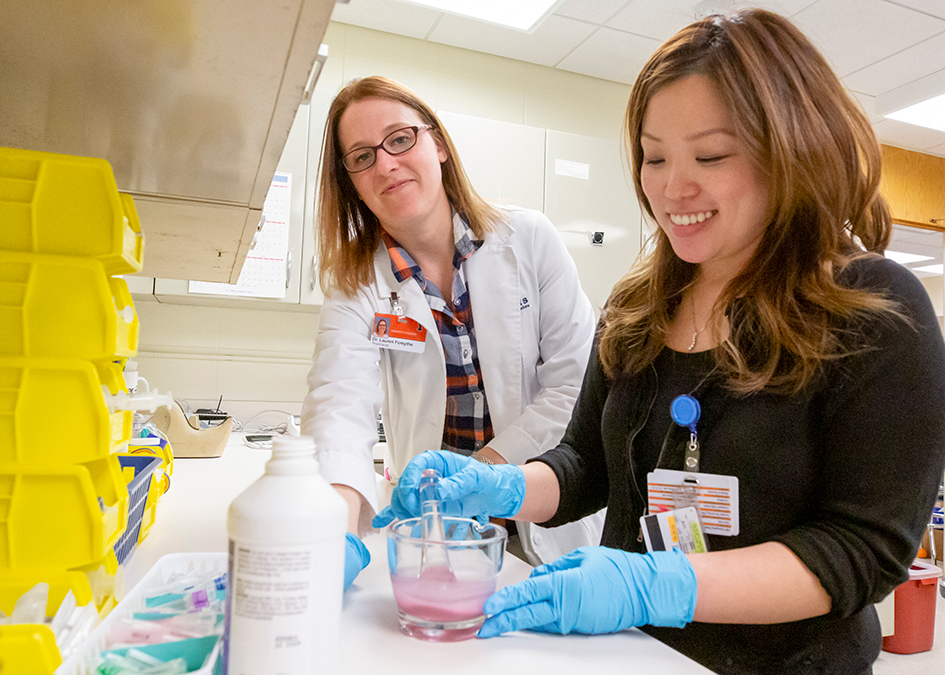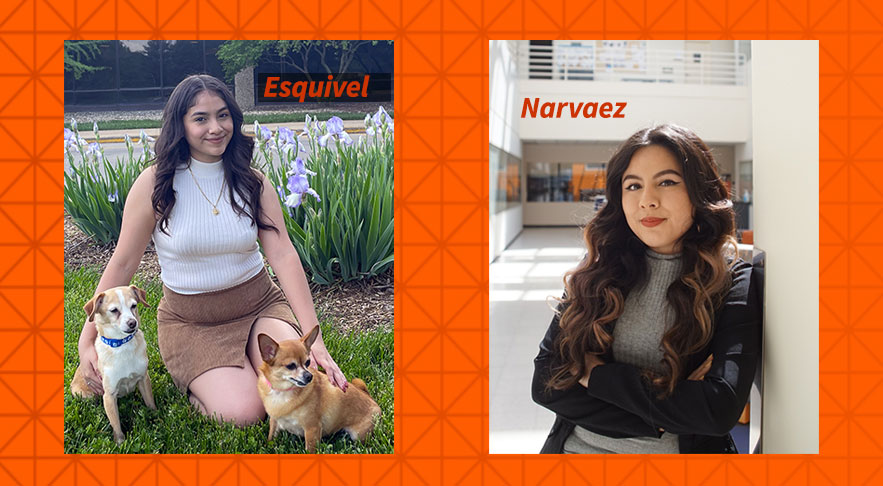This message will appear in the Summer 2022 issue of the Illinois State Veterinary Medical Association Epitome.
Dr. Lauren Forsythe wears a lot of hats around our college, and one of them is translator.
Dr. Forsythe is a Doctor of Pharmacy who is also a Diplomate of the International College of Veterinary Pharmacy and a Fellow of the Society of Veterinary Hospital Pharmacists (FSVHP). She is a clinical assistant professor and the coordinator of the Medication Dispensary at our Veterinary Teaching Hospital.
With the April 13 release of the FDA’s final guidance on compounded drugs for animals, she has been helping ISVMA leadership and even veterinary media nationally interpret what the document—written for pharmacists—means for veterinarians. Answering questions at town hall meetings and carefully reviewing messages sent to ISVMA members, Dr. Forsythe demonstrates the growing importance of pharmacists who specialize in veterinary medicine.
Veterinary Patients Need Custom Formulations
“I have stressed that most of the impact of the new guidelines falls on 503a and 503b pharmacies rather than on veterinary practitioners,” says Dr. Forsythe.
“The FDA has been listening to veterinary concerns relayed through the AVMA. They want to continue a dialog with the profession because they recognize the need for formulations that are not commercially available.”
She says there are good reasons for implementing more controls over compounding from bulk drug substances. “Most of these are white powders. It’s just too easy to accidentally get them mixed up and make a mistake,” she says.
“All patient-specific compounding can continue as long as the compounder documents appropriate rationale for using bulk chemicals. The reason for this is that, if a mistake is unfortunately made in a compound created for a single patient, the number of patients harmed is much lower than when a large quantity has been compounded and possibly shipped to multiple distribution points.”
Reporting Adverse Drug Events
As for the impact of the new guidelines on our hospital’s pharmacy, perhaps the biggest will be the need to put more stickers on the medications dispensed to owners.
“One sticker will tell clients to notify the FDA as well as the pharmacy of adverse events,” says Dr. Forsythe. “Including this information when dispensing a medication is a new guideline. Previously, there was no requirement to place this information on the medication.”
“I’m going to have to get bigger pill bottles to be able to display all the stickers!” she says with a laugh.
Adding Value to Veterinary Care
Dr. Forsythe and Dr. Alex Gochenauer, who like Dr. Forsythe holds PharmD and FSVHP credentials, have proven indispensable in our hospital. They have overseen the creation of a compounding cleanroom for the safe handling of hazardous drugs, such as for chemotherapy, and brought other best-practices from human hospital pharmacies to our college. Through a monthly column in the rvet ILLINOIS newsletter for hospital referrers and through client education handouts and videos, they educate veterinarians, pet owners, and veterinary students.
This summer, Drs. Forsythe and Gochenauer will welcome the first pharmacy resident to our newly created program. Illinois will become the fifth institution to offer a one-year residency for pharmacists in a veterinary setting. Dr. Forsythe says there is a demand for such training.
“We had 18 applicants for our position,” she said. “And we know more than 18 individuals were in the pool of applicants nationwide for only six residency positions available.” (One program accepts two residents each year.)
Moving Beyond the Pharmacy
In addition to academic veterinary hospitals, some large private hospitals, including Angell Animal Medical Center in Boston and Friendship Hospital for Animals in Washington, D.C., already employ veterinary-trained pharmacists.
“The veterinary industry tends to lag about 10 years behind the human medicine field,” observes Dr. Forsythe. “In human hospitals, there is a movement to decentralize pharmacists. So, you won’t find all the pharmacists holed up in the pharmacy. Some will be embedded within service areas.”
Dr. Meghan Fick, one of our emergency and critical care specialists, attended veterinary school at North Carolina State University, where the hospital employs more than half a dozen pharmacists, who participate in service rounds and review patient charts. Dr. Fick would love to see a pharmacist stationed within the ER/ICU.
“Introducing the clinical presence of pharmacists within teaching hospitals will help elevate the level of practice,” says Dr. Forsythe. “As DVM graduates who have experienced this service go out into practice, I predict you’ll see more veterinary-trained pharmacists not only in teaching hospitals but in the larger veterinary clinics.”




